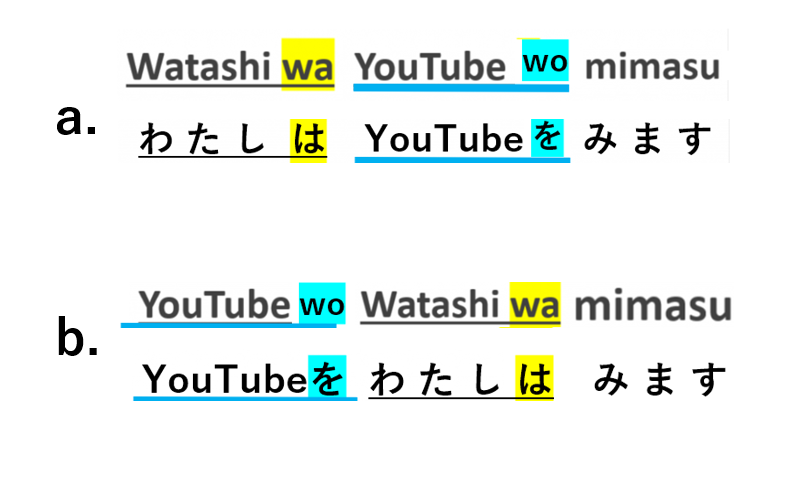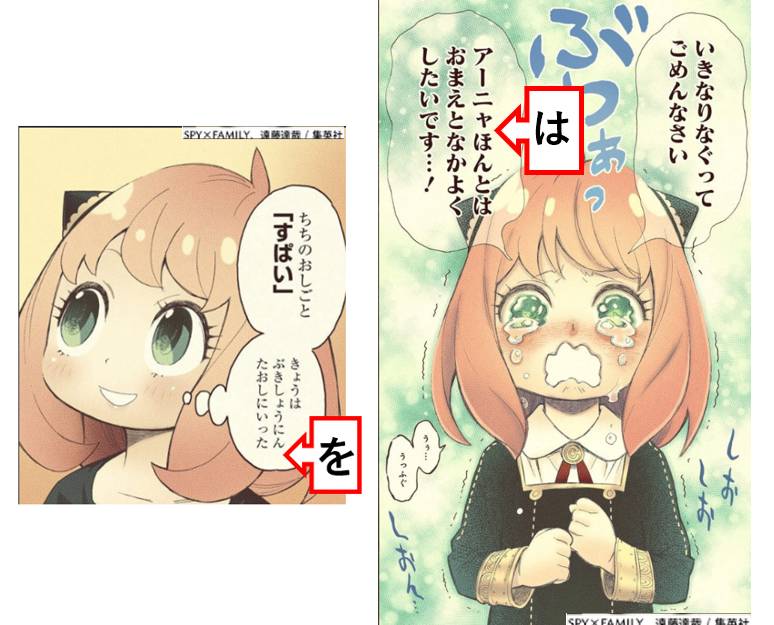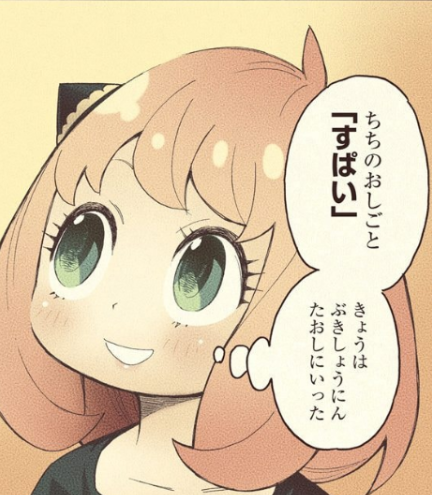Word order: English SVO, Japanese SOV Word order is the order in which phrases or…
Particle (marker)
I wrote in #8-1 that Japanese word order is not strict like its of English, but rather flexible. Why is it possible to understand the meaning of Japanese sentences even if the word order is not strictly determined?
Japanese language has particles. Particles are placed after words and serve as markers to determine whether the word is a subject or an object, and what kind of subject or object the word is. If you look at the particle, you can understand the role of that [word + particle]. Therefore, the meaning can be understood no matter where the [word + particle] is placed
For example, the two sentences below both mean “I watch YouTube.”
The particle “は” indicate that the word before it is subject of the sentence, and the particle “を” indicates object of the action. Even if the places of [word + particle] and [word + particle] are switched, the meaning will still be the same.
However, Verbs come to the end of the sentence in Japanese language. This point will be explained in detail in next article.

The two sentences both mean “I watch YouTube.”
Even if the places of [word + particle” are “] and [word + particle” are “] are switched, the meaning will still be the same.
Anya and particles

Anya often forgets particles.
In these two frames, she forgets “は” and “を”.The sentences are short and she correctly uses other particles required, so it sounds a bit strange to us, Japanese speakers, but we can understand the meaning. .
「アーニャは ほんとは おまえと なかよくしたいです…!」”I (Anya) really just want to be your friend!”
「きょうは ぶきしょうにんを たおしにいった」”Today he’s taking down an arms dealer!’
⇒ Next #8-3 Japanese sentence form: Verb
